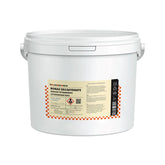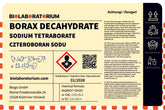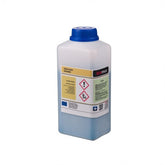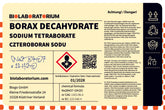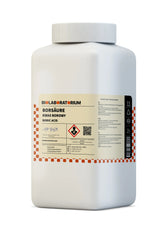Rubidium chloride – the reactive alkali chloride
Rubidium chloride (RbCl) is a fascinating alkali chloride that is gaining increasing importance in science and industry due to its unique properties. As a member of the alkali metal group, rubidium is a highly reactive element that occurs in nature only in compounds. Rubidium chloride is one of these compounds and offers fascinating insights into the world of chemistry.
The Discovery of Rubidium
Rubidium was first discovered in 1861 by Robert Bunsen and Gustav Kirchhoff. While analyzing mineral samples, they encountered a new element that they named "rubidium" due to its characteristic red spectral lines, derived from the Latin word "rubidus" for "dark red".
The discovery of rubidium was an important milestone in the development of atomic spectroscopy. Bunsen and Kirchhoff recognized that each element has a unique spectrum that serves as a "fingerprint" to identify it. This insight paved the way for many more discoveries in chemistry and physics.
Properties of Rubidium Chloride
Rubidium chloride is a crystalline, white salt that is solid at room temperature. It belongs to the group of alkali chlorides and exhibits some fascinating properties:
High Reactivity
Rubidium is one of the most reactive elements overall. It reacts violently with water to form hydrogen and rubidium hydroxide. Therefore, rubidium must be stored under protective gas to avoid contact with moisture.
Hygroscopicity
Rubidium chloride is highly hygroscopic, meaning it attracts moisture from the environment and dissolves in water. Therefore, it must be stored in airtight containers.
Ionic Structure
In rubidium chloride, the ions Rb⁺ and Cl⁻ are arranged in a cubic crystal lattice. The bond between the ions is a polar, ionic bond.
Use in Atomic Spectroscopy
Due to its characteristic red spectral lines, rubidium chloride is used in atomic spectroscopy. For example, it is used in rubidium atomic clocks, which enable very precise time measurement.
Applications of Rubidium Chloride
Although rubidium and its compounds are not as widespread as other alkali metals, they are still used in various areas:
Atomic Clocks
As mentioned earlier, rubidium atomic clocks are used in timekeeping. They utilize the precise vibrations of rubidium atoms to provide extremely accurate time measurements.
Medical Applications
Radioactive isotopes of rubidium are used in medicine for imaging and diagnosis. For example, rubidium-82 can be used in positron emission tomography (PET).
Pyrotechnics
Rubidium salts are also used in pyrotechnics, where they are responsible for the characteristic red fireworks effects.
Basic Research
In basic research, rubidium chloride serves as a model compound to study the properties of alkali metal salts. In particular, the ionic structure and hygroscopicity are of great interest.
Conclusion
Rubidium chloride is a fascinating alkali chloride that is used in various application areas due to its unique properties. From timekeeping to medicine and pyrotechnics – rubidium chloride offers diverse opportunities to explore and understand the world of chemistry. With its high reactivity and hygroscopicity, it also presents a challenge that must be handled safely and efficiently. The discovery of rubidium was an important milestone in the development of atomic spectroscopy and still impacts our understanding of chemistry today.

